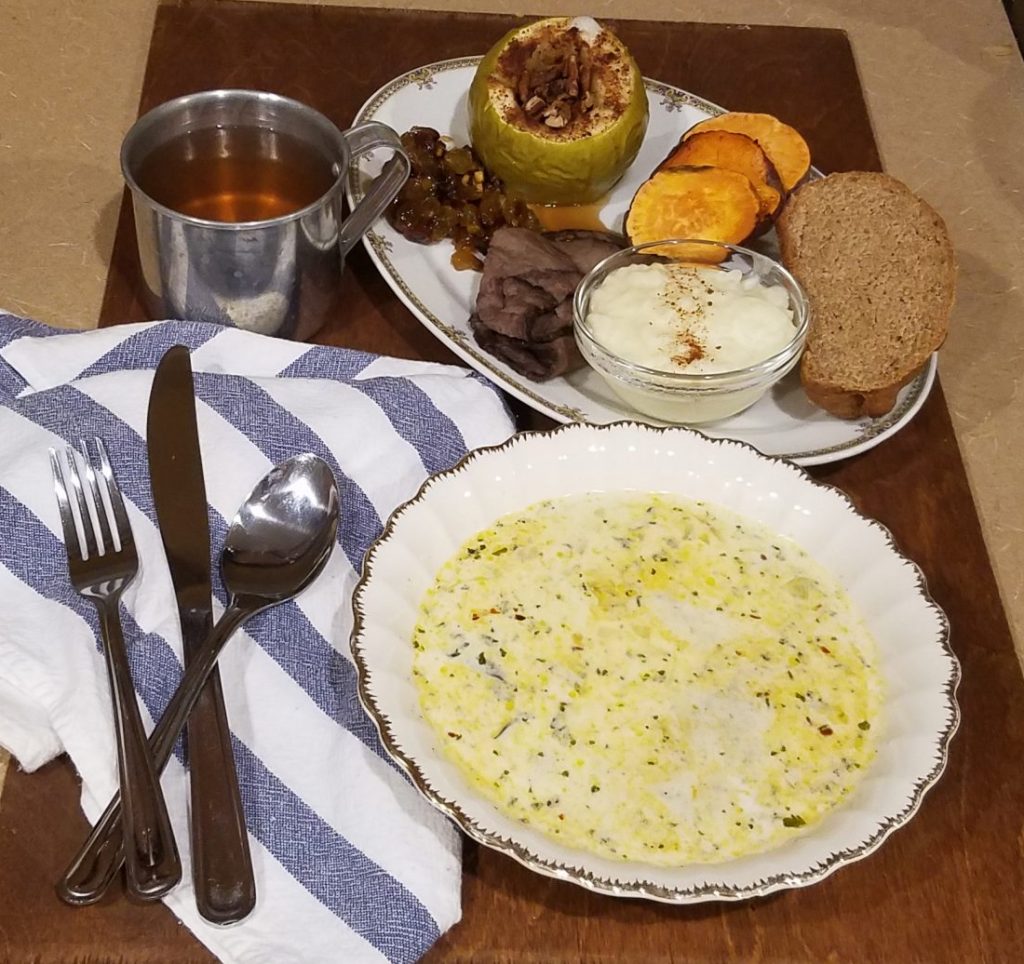Civil War Cooking: Thanksgiving Dinner at the Wolfe Street Hospital
The larger hospitals in cities usually tried to have special foods for holiday meals, and through the letters of Private Will Lamson from the 20th Maine Infantry Regiment, there’s a glimpse of the Thanksgiving dinner from 1862. Young Lamson had been hospitalized since early November since he had dysentery until “I got poor and weak so that it was hard work for me to march and Lt. Lyford thought that I’d better come here and recruit up for a few weeks.” He ended up in Alexandria, Virginia, at the Wolfe Street Hospital.
From his recovery place, Lamson wrote frequently to his family in Maine and detailed his Thanksgiving dinner.
[Wednesday, December 10, 1862]
We didn’t have Turkey for dinner Thanksgiving but expect some at Christmas. I spent the day the same as usual. One day is about like another here. We had for breakfast bread, and hash, and coffee at noon bread and butter and apple sauce (good) and tea, and at 3 P.M. roast beef, oyster soup, sweet “taters,” bread, baked apples, rice pudding and barberry sauce; but the last 3 kinds were “played out” before I got helped.
“And so the poor dog got none” but he’ll try and make up for it Christmas.
Breakfast and the noon meal seemed fairly simple, so I decided to tackle the dinner menu. It was a lot of food! Thanks to Will Lamson’s letter, I was inspired to cook some dishes that I’d never tried before, particularly oyster soup, rice pudding, and barberry sauce.
After reading several recipes for the soup, I decided to make a cream based soup. The hospital cooks could have used fresh, iced, or canned oysters, and for convenience and cost-effectiveness, I went with the canned version. It was actually the first time I’d ever eaten oysters in any form, and I was pleasantly surprised by the flavor.
Rice pudding often appears on hospital menus and not just for holidays. Created from cooked rice, milk, egg, a little sugar, and slice of butter, this slightly sweet treat is yummy warm or as chilled leftovers for breakfast.
Barberry sauce was a little mystery, and I headed for the internet search engines first. A barberry is a small berry that was introduced to North America. It’s described as having an acidic flavor and in some historic European dishes, the berry was used in a similar way to citrus peel. Middle Eastern sauces often use sugar with barberries.
I couldn’t find barberries at a large grocery store with extensive ethnic food sections. But I’d read that currants might be a possible substitute…well, I couldn’t find those either. So I went with the other suggested substitute: golden raisins. Some sources suggested that barberry sauce might have been used like cranberry relish, so I tossed some golden raisins, chopped orange peel, a little sugar and water into a pan and let it simmer down into a sticky sauce.
The meal’s flavors varied, but actually blended together nicely with savory and sweet. I loved the oyster soup and will definitely be making that again this winter. The menu is a lot of food, but it’s actually all pretty simple fare with natural, unprocessed flavors that are the classic best of historical cooking.
Source:
Lamson, William P. edited by Roderick M. Engert. Maine to the Wilderness: The Civil War Letters of Pvt. William Lamson, 20th Maine Infantry. Publishers Press, 1993. Page 43.

